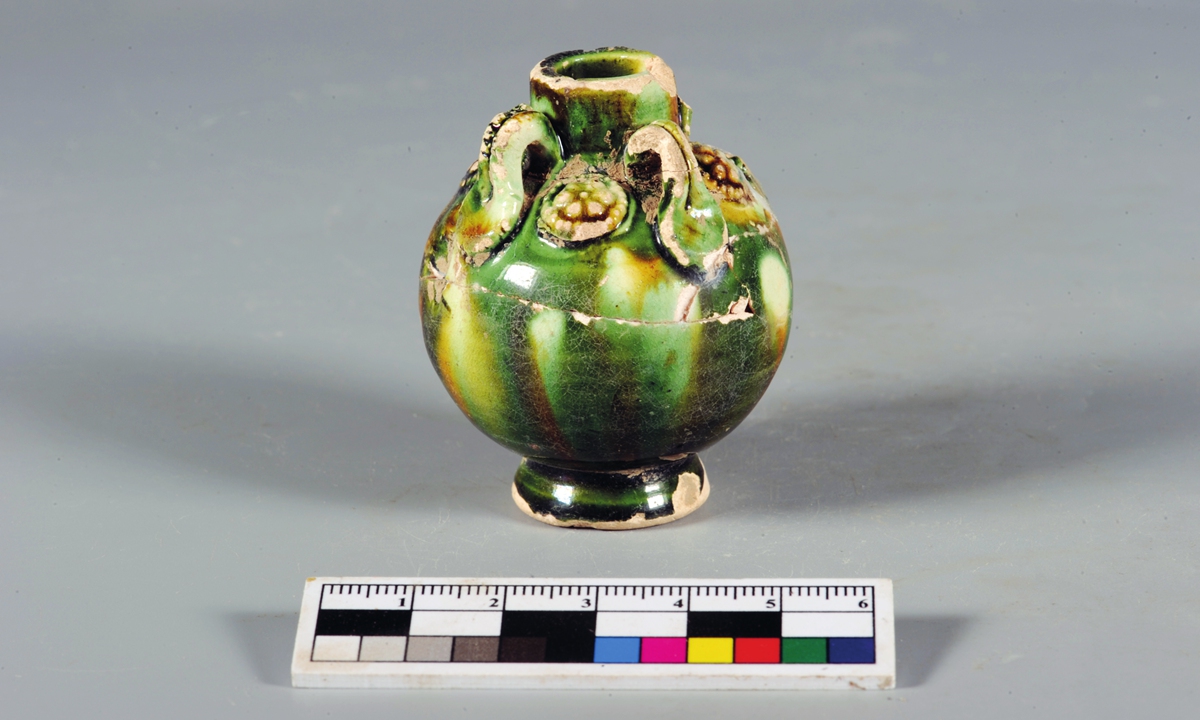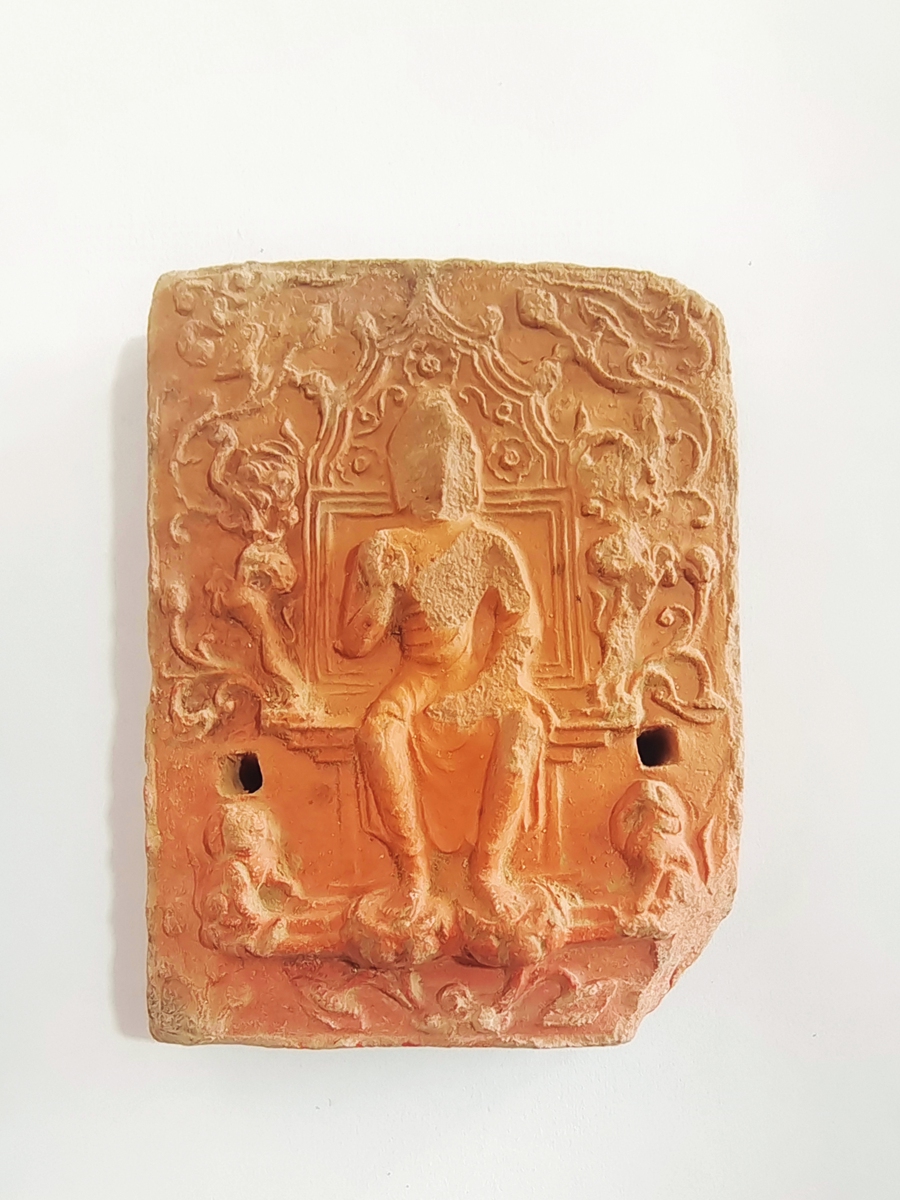ARTS / CULTURE & LEISURE
New discoveries testament to prosperity of ancient Chang’an
Dreaming of the Tang

A tri-color pot unearthed from the site of the Tang Dynasty East Market Photo: Courtesy of Han Jianhua
About 1,400 years ago, the broad streets of Chang'an, the capital city of the Tang Dynasty (618-907), were busy with the hustle and bustle of people as vendors hawked their wares and caravans from different places brought in rare treasures and gourmet spices to sell to local shop owners.The East Market of Chang'an, which was once a flourishing business center, has revealed new discoveries - the excavation of a cellar filled with Buddha statues and hundreds of cultural relics, including pottery transported through the ancient Silk Road.
Chinese archaeologists noted that the unearthed relics once again prove that the market in Chang'an was a big international trade center, adding that the discoveries are a big step toward mapping out a clear layout of the ancient city.
Discovery of Buddha statues
The site of the Tang Dynasty East Market was discovered in the late 1950s about 1 kilometer southeast of the city wall of Xi'an, capital of Northwest China's Shaanxi Province. Archaeological excavations show that the site is more than 1,000 meters long from north to south, 924 meters wide from east to west, and covers an area of about 1 square kilometer.
Han Jianhua, head of the archaeological team from the Chinese Academy of Social Sciences' Institute of Archeology, told the Global Times that a significant discovery made during the most recent excavation was a large painted clay-made Buddha statue about 1.5 meters tall. The statue was found in a pentagonal pit with its head facing west and face facing north.
Han said they found a small niche on the east wall of the pentagonal pit that was sealed with layers of slabs. More than 680 cultural relics have been unearthed from this small niche so far. Most of the items have been Buddha statues, both standing and sitting, as well as some small components from pagodas.

A relic engraved with a Buddha unearthed from the site of the Tang Dynasty East Market Photo: Courtesy of Han Jianhua
Most of these Buddha statues are fragile as they were made from unbaked clay, and some have been gilded or painted, which increased the difficulty for restoration experts.The archaeologists have been carrying out 3D scanning on site. The large Buddha statue was packed up in its entirety and transported to an indoor lab for better protection and further research.
Han said that what the Buddhist hall was actually used for remains unclear at the moment. It might be related to a Buddhist temple or may have been a warehouse for a business specializing in Buddha statues.
"It will be possible to have a more accurate judgment about this cellar pit after we finish clearing it out," he said.
Han said that the excavation of this batch of Buddha statues confirms historical records that said the East Market had Buddhist halls. Meanwhile, the unearthed gilded or painted Buddha statues and ceramics reflect a major leap in development for craftsmanship during the Tang Dynasty.
Flourishing business center
Historical resources show that the East and West markets were symmetrically located at the same position on both sides of a street in Chang'an, setting up the commercial structure of the imperial city in the Tang Dynasty.
According to Han, the site of the East Market covers a large area and they are currently mainly carrying out work in the northeast section.
Archaeological work on this area has been carried out successively in the south and north sides of the East Market, focusing on determining the layout of the entire northeast section of the East Market.
Three north-south roads were discovered in 2015, each with a water channel in the middle. Experts speculate that a typical shop layout at that time may have had a shop in the front and a workshop in the back. Roads, drainage channels, wells and house foundations dating to the Tang Dynasty have also been found in the northeast section of the site.
Most of the people living around the West Market were wealthy, while those around the East Market were mostly dignitaries. The whole area was prosperous, and there was even a "red-light district" at that time.
It is also a place where fashion and luxury goods gathered could be found in abundance.
The hundreds of cultural relics unearthed from the site have confirmed historical records. Han said most relics were daily necessities such as some tri-color glazed ceramics.
Glassware from the West was also found in the East Market and the decorative pattern of pasted beads on one tri-color pot was similar to the typical Persian decorative style of the time. These unearthed goods are a testimony to the rich trade that took place along the Silk Road.
Yu Jinlong, a cultural expert based in Beijing, told the Global Times that the Tang Dynasty was a prosperous era of political unity, economic development, cultural prosperity and frequent international exchanges.
"This archaeological discovery is of great significance to the restoration of Chang'an avenue and the enhancement of our cultural confidence. It can reproduce the prosperity of the Tang Dynasty," said Yu.

